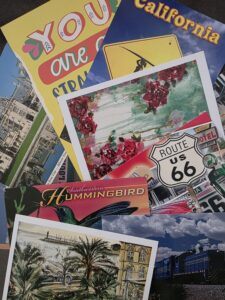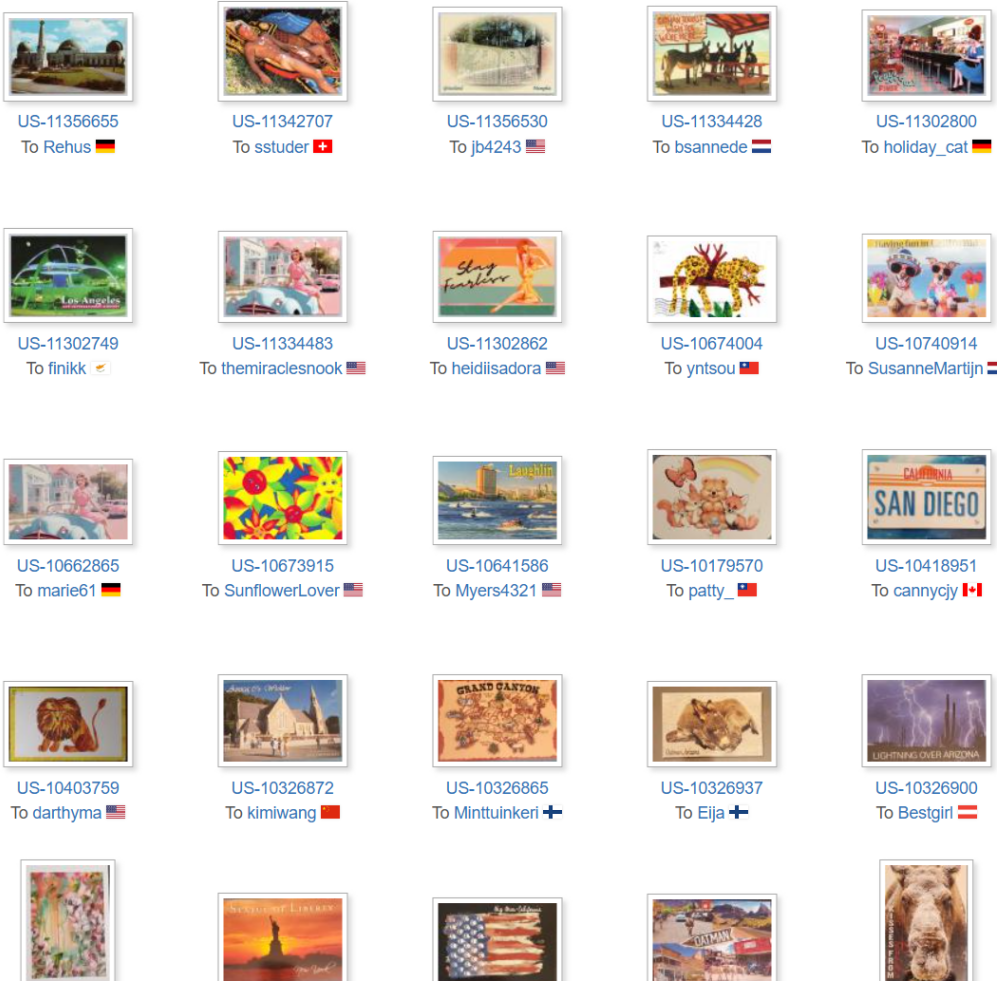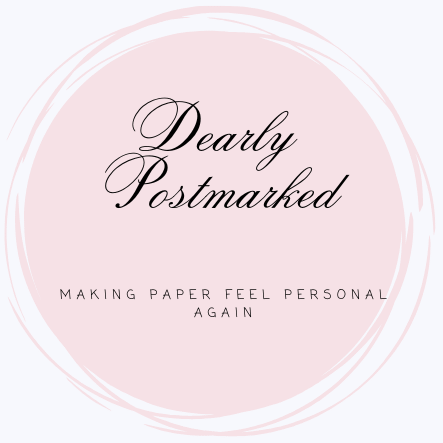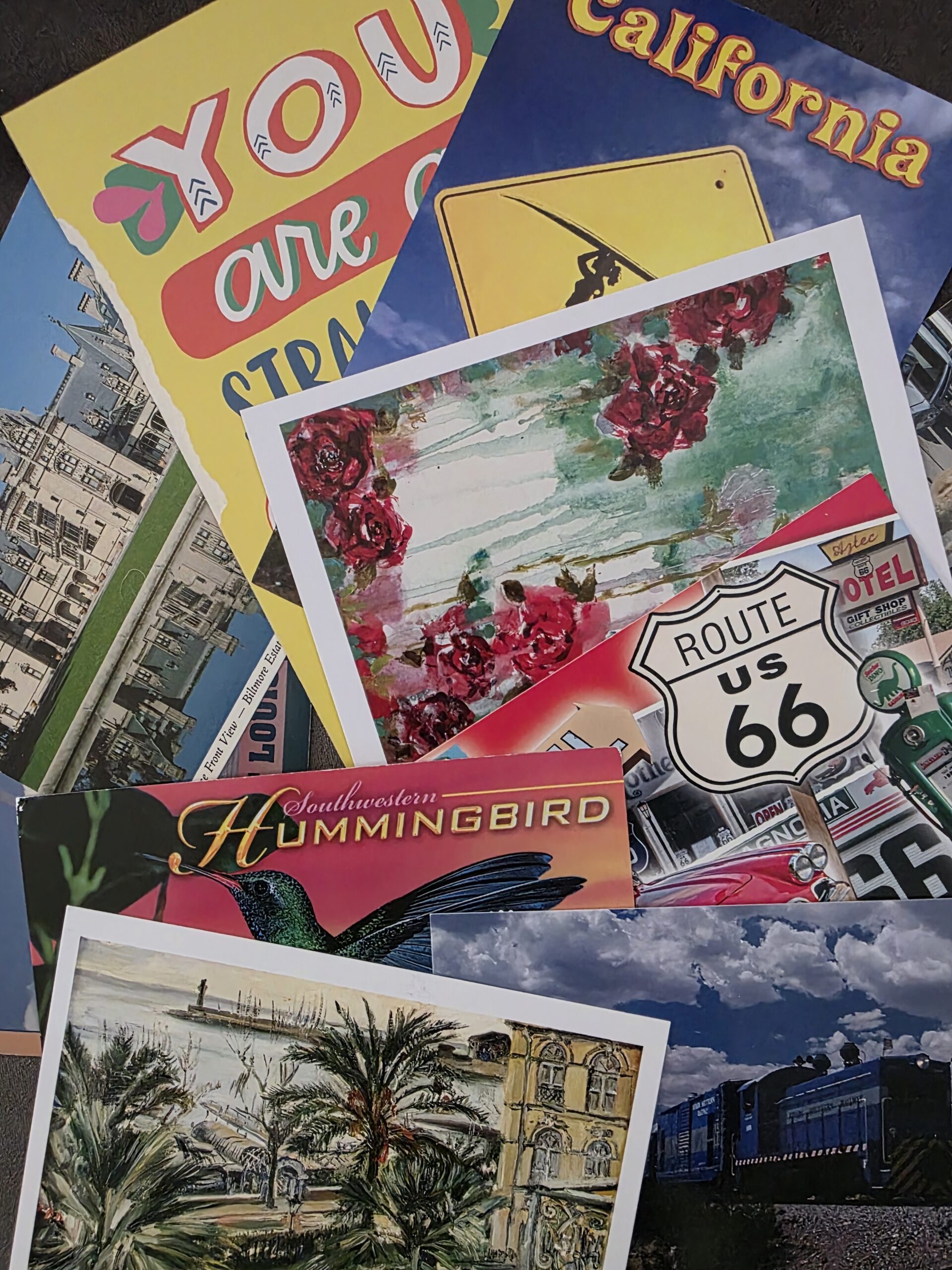Sending and receiving postcards from strangers across the globe is something I never thought could feel so personal, but Postcrossing absolutely makes it happen. The whole idea is simple: You mail a postcard to someone anywhere in the world, and you get a postcard back from a different stranger. It’s pretty fun, super welcoming to beginners, and the creative possibilities with each card are almost endless. If you ever wanted to make friends in new countries, learn about places you haven’t visited, or just add some color to your mailbox, Postcrossing is really worth checking out. Here’s everything you need to know to get started on your Postcrossing adventure.

What Is Postcrossing And How Does It Work?
Postcrossing is an online project designed to help people all over the world exchange real postcards through the mail. Once you sign up, you get the address of another random member and send them a postcard. When your postcard arrives, the recipient registers it online, which then triggers your address to be shared with another Postcrosser somewhere in the world. That’s how you get a postcard in return, and the process repeats. Every card is a surprise from a different person, and you don’t know which country your next piece of mail will come from until it appears at your door.
The platform started in Portugal in 2005 but has since grown into a tightknit (and huge!) international community. As of now, over 800,000 members from more than 200 countries have sent millions of cards. You’ll find everyone from high school students in Finland to retirees in Thailand exchanging stories, stamps, and little slices of culture.
What really makes Postcrossing special is the sense of global connection. Each postcard is like a small handwritten window into another person’s life, and just about everyone on the site has a cool story of making a friend or stumbling upon something new through the mail. It’s also a much more creative way to learn about faraway places than just browsing the internet. The world feels a little closer together every time you pull a new card out of the mailbox.
Creating Your Free Postcrossing Account
The first step to kick things off is jumping onto the official Postcrossing website. Registration only takes a few minutes and just asks for a valid email address, a username, and your mailing address. Your address is never shown publicly, only the person sending you a card will see it when the time comes, so privacy is covered pretty well.
Once your account is live, it’s a good idea to set up your profile right away. This is where you introduce yourself to other Postcrossers and tell them a bit about what you like. I recommend mentioning your hobbies, favorite postcard themes (like animals, city views, art, etc.), and maybe a few interesting facts about where you live. Some people even include short notes on favorite quotes, recipe tips, or just what their day to day life is like. You don’t have to get fancy, but adding some personality makes it easier for others to pick or write cards you’ll actually enjoy. If you’re feeling creative, you can even sprinkle in a smiley face or fun doodle to show your personality and make your profile feel welcoming.
How to Send Your First Postcard
Sending your first postcard is actually a lot easier than it sounds. When you’re ready, just log in and request to send a postcard. The site will randomly pick an address for you. Along with the address, you’ll also get a unique Postcard ID—for example, US1234567—which you need to write clearly on your card. This ID is key, because the recipient uses it to register the card once it arrives.
Here’s what you do next:
- Pick a postcard. Any design will work, from local scenes and landmarks to quirky art or wildlife photos. Some people love to use their own photos printed as cards.
- Write a friendly message. You don’t have to write an essay. Share something personal, describe what you like to do, add a fun fact about your town, or ask a question. If you’re stuck, check the recipient’s profile for inspiration.
- Don’t forget the Postcard ID. Write it clearly, usually near the main message or the address.
- Add a stamp. Make sure it has enough postage to mail internationally. Stamp collecting is a big side hobby for many Postcrossers, so pretty stamps are usually appreciated!
- Mail it off. Just drop it in a mailbox and go back to the site to mark it as sent.
That’s pretty much it. Your first card is on its way, and you can track its journey until it arrives. When someone registers it, you’ll be next in line to receive a surprise card from a new country. If you want to step up your first impression, add a small drawing or write a greeting in your native language—these personal touches make your card even more memorable for the recipient.
Stumbling Upon The World Through The Postcards Wall
 The above postcards wall is from my profile page of some of the most recent cards I have sent.
The above postcards wall is from my profile page of some of the most recent cards I have sent.
My personal favorite feature is the Postcards Wall on the Postcrossing website. Every card you send or receive gets scanned or photographed and added to your wall, creating a visual record of your global mail adventures. It’s basically a timeline of bright, colorful cards from places you may have never heard of before. Looking at your own wall is a great motivator because after a few months, it turns into a pretty impressive gallery full of tiny works of art, views from different continents, and personal messages.
Some Postcrossers go all in on decorating or organizing their wall, while others keep it simple and just enjoy browsing. You can search other people’s walls too, which is a great way to find inspiration for what kinds of cards you’d like to send or receive. The variety is wild; in one row, you might spot vintage Paris street scenes, rare wildlife from Namibia, and a handmade collage from a teenager in Japan. If collecting different handwriting styles or unique stamps is your thing, the wall makes it easy to spot some eye catching examples and get a sense of how much creativity is out there.
Why Postcrossing is Worth Trying
If you’re looking for a low-stress, super engaging way to connect with other people worldwide, Postcrossing is honestly hard to beat. Here’s what I’ve found so rewarding about it:
- It’s easy to start. You don’t need any special gear or a big budget. A few postcards and stamps get you going.
- It breaks the routine. Getting a postcard in the mail is way more fun than another bill or ad flyer. Every card is a surprise.
- Every country is involved. There are over 200 countries with active members, so you could get mail from anywhere, including places you’ve never heard of.
- You learn a lot. Every card teaches you about another part of the world, whether it’s a new language, a holiday tradition, or a different way of life.
- It sparks friendships. Sometimes, one postcard leads to a longer correspondence or even meeting up in person when traveling. Stories of meeting Pen Pals turned friends in other countries pop up on the forums regularly and show just how meaningful these little connections can be.
There’s also a bonus in building a cool collection of stamps, which lots of Postcrossers get super passionate about. The creative side of choosing, designing, or writing cards can be just as rewarding as the receiving part. If you’re an artist, Postcrossing is a chance to show off your own designs, while travelers can share scenes from recent trips.
Tips and Common Questions for Postcrossing Beginners
Getting started isn’t tough, but there are a few things to keep in mind to keep your Postcrossing experience running smoothly:
- Start slow. In the beginning, you’re limited to sending 5 postcards at a time. Once your cards start arriving and getting registered, you’ll unlock more slots and can send more at once.
- Read profiles before you write. Everyone’s profile lists their interests, so referencing these can really brighten someone’s day. If they like cats, a cute cat card might make their week.
- Address and ID matter. Double check the address and always include the Postcard ID. Cards without IDs can’t be registered.
- Don’t stress about perfection. Not every card needs to be perfect; a simple, honest message goes a long way.
- Ask for help. The forums on the website are super supportive and filled with friendly advice for new users. You’ll find everything from postcard swaps to suggestions on finding cheap postage.
Some common questions I’ve come across:
What if my postcard doesn’t arrive?
Mail can get lost sometimes, so it’s normal for some cards to go missing. If your card isn’t registered after 60 days, it’s considered expired, and you can send another one. Most cards do make it, and you’ll be surprised how reliable the mail can be! Some members even say that lost cards sometimes turn up months later, giving you a surprise from the past.
Can I choose which countries to send to?
Addresses are randomly assigned, but there’s a fun option to send within your own country or avoid it if you prefer international cards only. Sometimes you will get countries more often if they have many active members, like Germany or Russia, but the surprises keep it exciting.
Are homemade or printed postcards okay?
Absolutely. Many Postcrossers create handmade cards or have personal photos turned into postcards. Just check the recipient’s profile; some love the personal touch, others might prefer store bought ones. As long as your card is sturdy and the message is sincere, most people truly appreciate anything you send their way.
Going Further: Postcrossing Events and Direct Swaps
After you’ve sent and received a few postcards, you might want to get involved a little more. The Postcrossing community often organizes meetups, both online and in person, where people swap cards in bulk, collect event stamps, and just nerd out over postcards together. There’s a specific section on the site for these announcements, and joining even one event is a cool way to meet new friends and pick up some rare cards exclusive to those gatherings. If you can’t make it in person, there are also virtual meetups where you can swap tips and ideas.
There’s also something called “direct swaps.” If you click with another member or want to trade cards outside the official system, you can arrange your own exchanges by messaging through the site. You can swap specific themes, share extra cards from your travels, or trade for unique stamps. It’s a fun way to build more lasting friendships and round out your collection, letting you keep in touch with people who share your favorite hobbies or interests even beyond postcards.
Jumping into Postcrossing is such a simple, satisfying way to create real, positive connections with people worldwide. Every mailbox surprise is a reminder that thousands of people want to share a smile, a story, or a slice of their daily life, and you get to be a part of it. Wrapping up, if you love snail mail, unique connections, or just brightening someone’s day, Postcrossing is a hobby you should definitely track down and try. Who knows what kind of eye-catching cards or global friends are waiting for you just around the corner?


Well, Postcrossing sounds like a lot of fun. Sounds a little like my adventure into trading ACEOs/ATCs through Facebook groups that swap their cards to other members of the group. I’ve done that many times in the past and have created my artist trading cards both by hand and digitally to send around the world. I have a binder full of great ATCs from around the world. I love photography, drawing, and different art, so this is right up my alley. I’m going to go join up right now. You have some cool cards in your profile gallery.
Oh Shirley, I’m so happy that you are going to join Postcrossing. I’m sure your collection of ATC’s is magnificent. I’ve never swapped ATC’s, simply because I’m not that great at art, but I have swapped some mail art and collage envelopes on Swap-Bot before. It’s a lot of fun. Thanks for taking the time to read my post and make a comment.
I love the idea of Postcrossing but I wish they had a “just send to your own country” option. I love international mail but the postage adds up so quickly! 🫤
I wish they had that option too, especially since it’s more expensive to mail to other countries. However, Postcrossing does allow private swaps. I got the following directly from their website. If you prefer to choose a specific country to send or receive postcards from, consider organizing direct swaps.
What are direct swaps?
Some members exchange postcards directly between them — we call those direct swaps. They are organized by the members themselves, often in the forum. Since they are not tracked by Postcrossing, they do not have Postcard IDs associated with them.
To help members know if another postcrosser is interested in direct swaps or not, we allow profiles to display that preference. This way, members who are interested in doing direct swaps are easier to find and members who do not wish to participate can clearly state so.
Please note that direct swaps are not an official Postcrossing activity. If you engage in a direct swap with another person, keep in mind that those are not monitored by Postcrossing in any way… so we will not be able to help you if you have problems with any direct swaps you participate in.